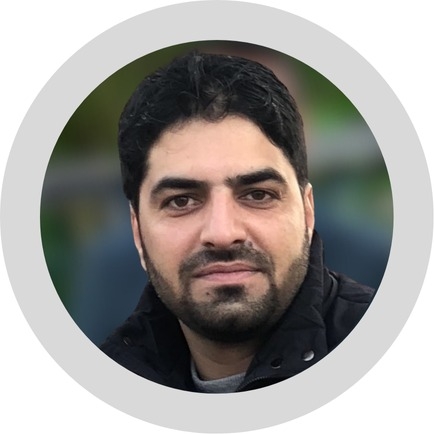Srinagar: Farooq Ahmad remembers the horrific experience he and his father had while travelling in Kashmir on the National Highway 44 in their car. The doctor's son and his father were returning home to Srinagar’s outskirts when they were hit by a vehicle coming in the opposite direction of a single tube of the highway. The duo sustained minor bruises but the psychological trauma was overwhelming leaving them home for a week.
"It took almost two months to overcome the shock and horror," Ahmad said. "I was not ready to look at my car, leave aside sitting behind the wheel. It took a few sittings with a counsellor to come out of the horror," added Ahmad.
Since then, he has been driving with utmost care and caution on highways as well as interiors. Yet, it has been difficult for him to completely escape the horror as frequent road accidents renew his memories.
Annually, Jammu and Kashmir accounted for three per cent of accidents in the country, recording the highest number of accidents among the union territories including the national capital. The official data shows that it saw 6,092 accidents in 2022 further up by 6,298 in 2023 with 893 deaths.
India saw a total 4,61,312 accidents claiming 68,491 lives and wounding 4,43,366 people, according to the Ministry of Highways and Road Transport. It contributes 11 per cent in total fatalities, ranking 3rd globally for road crashes.
While India was one of the first few countries to have signed the Brasilia Declaration in 2015 where it pledged to reduce fatalities by 50 per cent by 2020. But it was unable to achieve that target.
Now Union Minister for Road Transport and Highways Nitin Gadkari has set a target to reduce fatalities caused by accidents to half in 2030. Official data suggest that road accidents and deaths result in a socio-economic loss of 3.14 per cent to the country’s GDP.
But there is no let-up in horror on the roads with 3954 accidents claiming 567 lives across the 20 districts of the union territory from January till August this year. Roughly, this suggests 16 accidents per day or above 480 accidents in a month with more than two lives devoured in a day.
Two doctors at the tertiary Shri Maharaja Hari Singh Hospital in Srinagar who supervise trauma cases blame the increase in fatalities to the lack of green corridors for ambulances or time wasted in reaching hospitals.
The majority of the people who die in accidents, according to a trauma specialist, don't reach hospitals in time. This is a key reason for the fatalities as time is wasted during the 'golden hour', the crucial first hour after suffering an accident, the trauma specialist said.
On average, a dozen or more people with injuries mainly with head or fractures in bones are received on a daily basis at one hospital. Many patients who are saved, however, have to suffer lifelong health issues, the trauma specialist said.
"We can bring the death rate in accidents by putting in place a system which is crucial for golden hour," said a senior surgeon, who mostly sees people between 15-40 age group prone to road accidents. "It needs roadside ambulances fully equipped with manpower and machinery in place to shift the patients from the spot."
Citing several examples, the medico says, patients who suffer cervical injuries have to be shifted to health facilities as per the protocol. But in the absence of any proper management, their complications increase, spurring lifelong health issues, the medico adds.
"The medical colleges need to train college students in the management of roadside victims," he told ETV Bharat. "This can save our future as mostly youngsters doing stunts and over-speeding are seen in hospitals."
The concerned law enforcement agencies have been tough with 9,57879 challans recorded against violators in the first eight months. The last year’s official data accounted for 1372501 fines on highways as well as state roads.
A senior J&K Traffic Police official argues that increasing penalties have less impact on curbing road accidents as there are multiple loopholes in the system. The priority, he suggested, is defining speed limits for roads both highways and state roads. Once implemented, according to him, it can have a psychological impact on drivers.
In Srinagar, traffic officials said the project to control speeding which is the main cause of accidents is in the final phase of installation and acts as a deterrent. They are employing Artificial Intelligence and technology to detect violators like over-speeding vehicles.
Right now, according to him, they have to argue with a person for violating traffic rules in the absence of proper evidence or proper. However, the AI system can generate challans for over-speeding with proper evidence.
In several cases, 'blackspots' and lack of service roads on highways on Srinagar outskirts have contributed to road accidents with the latest accident claiming a life on the Parimpora-Baramulla highway.
Junaid Nazir, road safety expert and technical head of NGO Kashmir Road Safety Foundation, which completed 1000 awareness programmes recently, cites bureaucratic interference in engineering designs as one of the factors leading to accidents. He cites several key roads in the Kashmir Valley including the commercial hub Jehangir Chowk-Rambagh flyover for contributing to traffic conflicts.
"People are ready to pay fines," said Junaid and suggested stricter legislation including an increase in jail term for violations particularly over speeding to prevent accidents.



